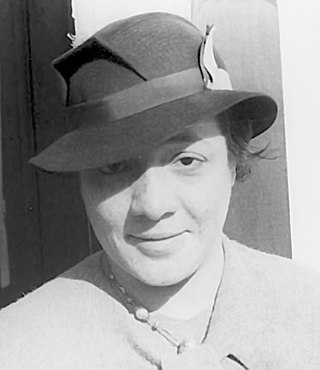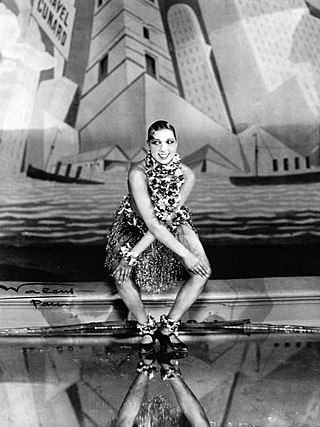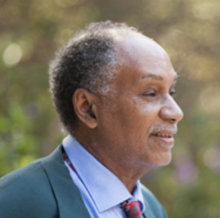Négritude is a framework of critique and literary theory, mainly developed by francophone intellectuals, writers, and politicians in the African diaspora during the 1930s, aimed at raising and cultivating "Black consciousness" across Africa and its diaspora. Négritude gathers writers such as sisters Paulette and Jeanne Nardal, Martinican poet Aimé Césaire, Abdoulaye Sadji, Léopold Sédar Senghor, and Léon Damas of French Guiana. Négritude intellectuals disavowed colonialism, racism and Eurocentrism. They promoted African culture within a framework of persistent Franco-African ties. The intellectuals employed Marxist political philosophy, in the Black radical tradition. The writers drew heavily on a surrealist literary style, and some say they were also influenced somewhat by the Surrealist stylistics, and in their work often explored the experience of diasporic being, asserting one's self and identity, and ideas of home, home-going and belonging.

Afro-Cubans or Black Cubans are Cubans of full or partial sub-Saharan African ancestry. The term Afro-Cuban can also refer to historical or cultural elements in Cuba associated with this community, and the combining of native African and other cultural elements found in Cuban society, such as race, religion, music, language, the arts and class culture.
Afro-Caribbean people or African Caribbean are Caribbean people who trace their full or partial ancestry to Africa. The majority of the modern Afro-Caribbean people descend from the Africans taken as slaves to colonial Caribbean via the trans-Atlantic slave trade between the 15th and 19th centuries to work primarily on various sugar plantations and in domestic households. Other names for the ethnic group include Black Caribbean, Afro or Black West Indian or Afro or Black Antillean. The term Afro-Caribbean was not coined by Caribbean people themselves but was first used by European Americans in the late 1960s.

Ada Beatrice Queen Victoria Louise Virginia Smith, better known as Bricktop, was an American dancer, jazz singer, vaudevillian, and self-described saloon-keeper who owned the famous nightclub "Chez Bricktop" in Paris from 1924 to 1961, as well as clubs in Mexico City and Rome.

Iba N'Diaye was a French-Senegalese painter. Trained in Senegal and France during the colonial period, N'Diaye utilised European modernist fine arts training and medium to depict his views of African realities. He returned to Senegal upon its independence, and became the founding head of Senegal's national fine arts academy. Disenchanted with the prevailing artistic and political climate of mid-1960s Dakar, N'Diaye returned to France in 1967 and exhibited around the globe, returning to his birthplace of Saint-Louis, Senegal, to present his work in Senegal again only in 2000. N'Diaye died at his home in Paris in October, 2008 at the age of 80.

The Harlem Renaissance was an intellectual and cultural revival of African-American music, dance, art, fashion, literature, theater, politics and scholarship centered in Harlem, Manhattan, New York City, spanning the 1920s and 1930s. At the time, it was known as the "New Negro Movement", named after The New Negro, a 1925 anthology edited by Alain Locke. The movement also included the new African-American cultural expressions across the urban areas in the Northeast and Midwest United States affected by a renewed militancy in the general struggle for civil rights, combined with the Great Migration of African-American workers fleeing the racist conditions of the Jim Crow Deep South, as Harlem was the final destination of the largest number of those who migrated north.
Laissez-faire racism is closely related to color blindness and covert racism, and is theorised to encompass an ideology that blames minorities for their poorer economic situations, viewing it as the result of cultural inferiority. The term is used largely by scholars of whiteness studies, who argue that laissez-faire racism has tangible consequences even though few would openly claim to be, or even believe they are, laissez-faire racists.
Black French people also known as French Black people or Afro-French (Afro-Français) are French people who are of African or Melanesian ancestry. It also includes people of mixed African/Melanesian and French ancestry.

The word negrophilia is derived from the French négrophilie that means "love of the Negro". It was a term that avant-garde artists used among themselves to describe their fetishization of Black culture. Its origins were concurrent with art movements such as surrealism and Dadaism in the late 19th century. Sources of inspiration were inanimate African art objects such as masks and wooden carvings that found their way into Paris's flea markets and galleries alike as a result of colonial looting of Africa, and which inspired artworks such as Picasso's Les Demoiselles d'Avignon, as well as live performances by Black people, many of whom were ex-soldiers remaining in European cities after World War I, who entertained as a source of low income. Equally of interest to avant-garde creators were live arts such as dance, music and theatrical performances by Black artists, as evidenced by the popularity of comic artist Chocolat and the musical review Les Heureux Nègres (1902).
Tracy Denean Sharpley-Whiting is a feminist scholar and Gertrude Conaway Vanderbilt Distinguished Professor of French in the Department of French and Italian at Vanderbilt University where she serves as Vice Provost of Arts and Libraries as well as Director of the Callie House Research Center for the Study of Global Black Cultures and Politics. She served as Associate Provost for Academic Advancement from October 2021-June 2022. She was also the Chair of African American and Diaspora Studies until August 2022. She is editor of The Speech: Race and Barack Obama's "A More Perfect Union", and editor of the academic journal Palimpsest: A Journal on Women, Gender, and the Black International. She is also series co-editor of "Philosophy and Race" with philosopher Robert Bernasconi.
William Gardner Smith was an American journalist, novelist, and editor. Smith is linked to the black social protest novel tradition of the 1940s and the 1950s, a movement that became synonymous with writers such as Richard Wright, Ralph Ellison, Willard Motley, and Ann Petry. Smith's third book, South Street (1954), is considered to be one of the first black militant protest novels. His last published novel, The Stone Face (1963), in its account of the Paris massacre of 1961, "stand[s] as one of the few representations of the event available all the way up until the early 1990s".

Carlos Moore is a writer, social researcher, professor and activist, dedicated to the study of African and Afro-American history and culture. Moore holds two doctorates, in Human sciences and in Ethnology from the Paris Diderot University, and speaks five languages. At various periods he lived in France, Africa, the United States of America, Brazil and the Caribbean
Ernest Leroy Nocho, better known by his stage name Lobo Nocho, was an emigré jazz singer and painter in Europe. A former United States citizen, he settled in Europe after serving in World War II, and renounced his citizenship in 1950 to become a French citizen. He was later widely noted for his romantic links to Winston Churchill's daughter Sarah Churchill.

Black Welsh people are inhabitants of Wales who have an African or an Afro-Caribbean background and are black. Wales is home to one of the United Kingdom's oldest black communities, and Tiger Bay in Cardiff has housed a large Somali population since the development of the port in the 19th century. The 2011 census reported that there were more than 18,000 Welsh-African people in Wales.
Jeanne "Jane" Nardal was a French writer, philosopher, teacher, and political commentator from Martinique. She and her sister, Paulette Nardal, are considered to have laid the theoretical and philosophical groundwork of the Négritude movement, a cultural, political, and literary movement, which first emerged in 1930s, Paris and sought to unite Black intellectuals in the current and former French colonies. The term "Négritude" itself was coined by Martiniquan writer-activist Aimé Césaire, one of the three individuals formally recognized as the "fathers" of the cultural movement, along with Senegalese poet Léopold Senghor and French Guianese writer Léon Damas. It was not until relatively recently, however, that the women involved in the Négritude movement, including Jane and Paulette Nardal, began to receive the recognition they were due.

Paulette Nardal was a French writer from Martinique, a journalist, and one of the drivers of the development of black literary consciousness. She was one of the authors involved in the creation of the Négritude genre and introduced French intellectuals to the works of members of the Harlem Renaissance through her translations.
Florence Emery "Embry" Jones was an American jazz singer and dancer, notable for her work in Paris during the 1920s. She was known for her elusive persona and for performing at Le Grand Duc and later at Chez Florence in Montmartre.

Coleman Cruz Hughes is an American writer and podcast host. He was a fellow at the Manhattan Institute for Policy Research and a fellow and contributing editor at their City Journal, and he is the host of the podcast Conversations with Coleman.

Tyler Edward Stovall was an American academic and historian. He served as president of the American Historical Association in 2017.









